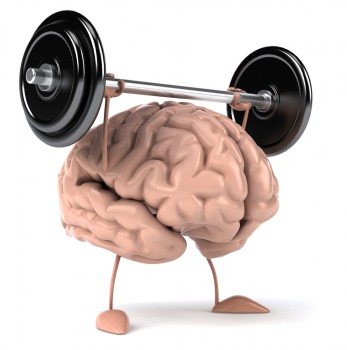 The tendency in holistic or “mind-body” wellbeing is to focus on the importance of mental wellbeing for physical health. Reducing stress, practicing mindfulness, and experiencing positive emotions all have an impact on our physical health. But the mind-body connection works in the other direction too. Using our bodies and developing physical fitness is also good for our mental wellbeing.
The tendency in holistic or “mind-body” wellbeing is to focus on the importance of mental wellbeing for physical health. Reducing stress, practicing mindfulness, and experiencing positive emotions all have an impact on our physical health. But the mind-body connection works in the other direction too. Using our bodies and developing physical fitness is also good for our mental wellbeing.
Physical exercise is probably the single best health practice that anyone can adopt into their lifestyle. It counteracts the effects of chronic stress and it improves cardiovascular functioning, strength, endurance, flexibility and reduces other biological markers of aging.
Conversely, a sedentary lifestyle seems to be at the root of a lot of the health problems in our society (worse than smoking!) This is a scary thought when you consider current trends towards more engagement via computers and other digital devices and less using our bodies to navigate the real world. Research shows that sitting around at a computer all day is literally killing us.
But exercise and fitness is not only good for maintaining and improving physical health. It is good for our mental health as well. Physical exercise alleviates anxiety and mental stress, and has been shown to be better than drugs for the treatment of depression. Exercise is good for the brain.
John Ratey, an M.D. and psychiatry professor from Harvard Medical School, wrote a wonderful book on the mental benefits of exercise called “Spark: The Revolutionary New Science of Exercise and the Brain.” As he points out, the same things that kill the body kill the brain. Exercise that lowers our blood pressure and strengthens our heart, also improves blood flow to the brain, and stimulates nerve cell growth that can improve mental functioning.
As we get older, it is the same cardiovascular and metabolic processes that will ultimately impact both physical and mental health. According to Ratey, people who are obese are twice as likely to experience dementia. And Alzheimer’s disease is more likely in people with heart disease. Other physical illnesses (related to lifestyle,) such as diabetes and cholesterol are also related to greater incidences of brain decline. By using exercise to prevent the physical declines associated with aging, we are also protected against mental declines.
Although we don’t seem to hear about it much, there is a surprising amount of research on the impacts of exercise on brain function. Studies have found that exercise can improve memory, enhance creativity, and support “executive function” or the ability to rationally make good decisions about what actions to take.
I am a big fan of physical fitness and exercise (and have been ever since I was a scrawny kid who dreamed of being a muscular jock.) But what I like about this research is that it opens up the world of fitness to a whole new audience. Imagine people who have never participated in fitness and exercise because they are not concerned about their physical appearance. Imagine people who have always felt that intellectual pursuits are more important than athletic ones.
The latest science tells us that the two go hand in hand. Exercise is not only for physical appearance and athletic prowess. It also helps us to manage our mood and flex our intellectual muscles as well. Hopefully this information is enough to get a few bookworms out of the library and into the gym, at least a few times a week.
Exercise is the best medicine for most of what ills us. If you are too stressed, too tired or too busy to go to the gym, you should realize that exercise is probably the key to alleviating that stress, giving you more energy, and giving your brain the boost it needs to creatively manage your schedule better (see “Why Working Out Every Day is Easier than Three Times a Week.”)
No longer is exercise simply about how fast you can run, how high you can jump or how much weight you can lift. It is about developing emotional strength, improving the speed of your intellect, and pumping up your creativity. It’s just a lot harder to admire your chiseled cerebellum in the mirror.
—
References and Recommended Reading:
Ratey, J. J. & Hagerman, E. (2008). Spark: The Revolutionary New Science of Exercise and the Brain. Little, Brown and Company.

Hi Jeremy,
Great article as usual! I am working with a terrific exercise physiologist on a wellness program and he says: “If there was a pill that offered all the benefits of regular exercise, everyone would be taking it.” Thanks for the reminder to keep moving!
Louisa
Another great article, J! LOVED your last 2 paragraphs in particular – very clever! Louisa’s comment is very true as well.
If I may, here’s another argument I’d like to add:
Consider this question: what two things differentiate an animal from a plant? The answer is two-fold. 1- its ability to move around, go places, and use its body purposefully. 2- its physical brain. Plants may have intelligence, but they don’t have an actual brain, because they feed themselves from the ground underneath them and from the sun rays coming from above. Animals have to go find food, and so they need the ability to think, strategize, and move.
The connection is quite clear: if you have a brain, you need to move. And the more you move, the stronger your brain will be!
MarieJ
Thanks Marie-Josee! John Ratey agrees with you. The evolution of the brain is attached to the genesis of mobility in living creatures. Movement and the brain go hand in hand! Thanks, J